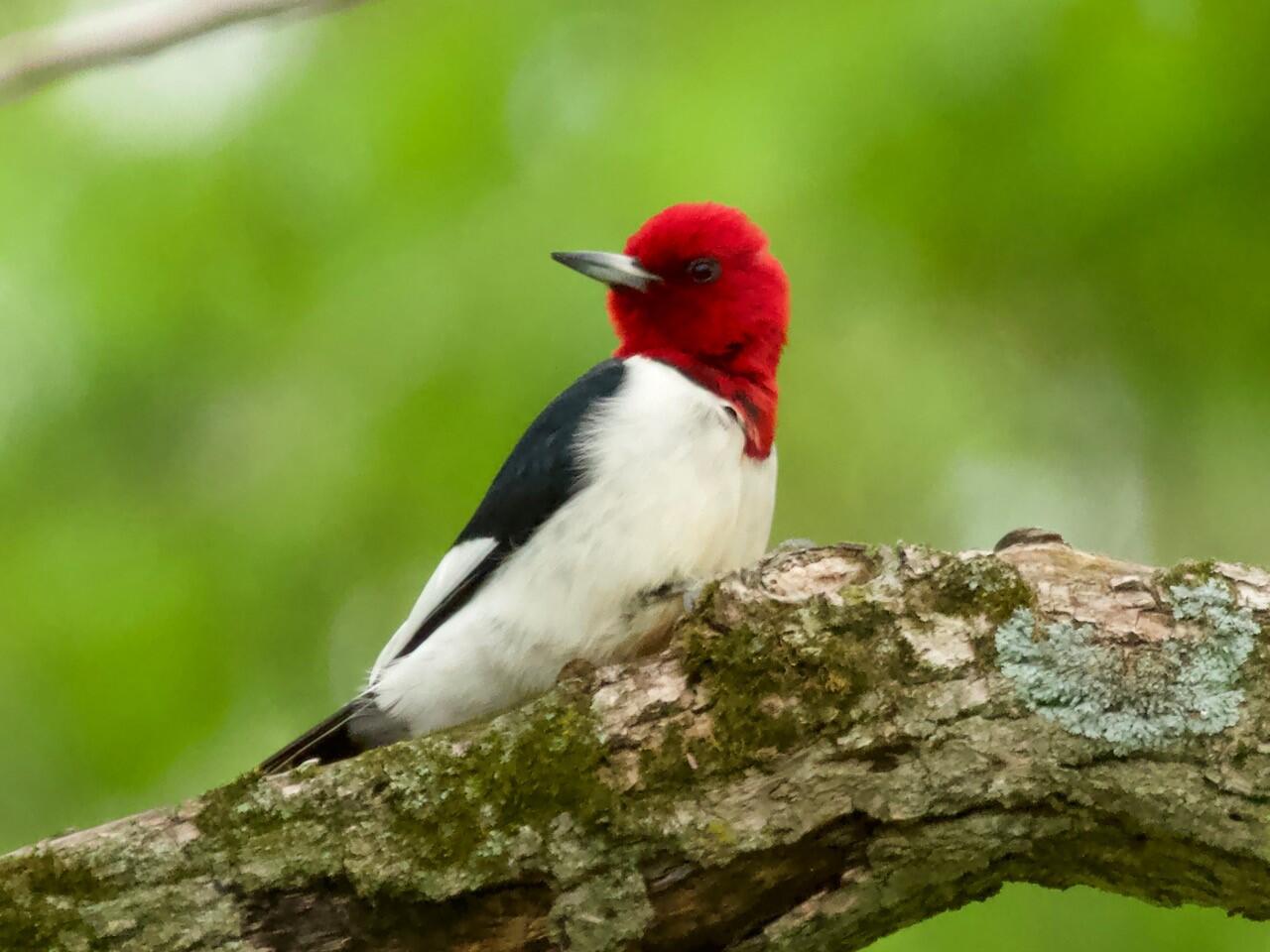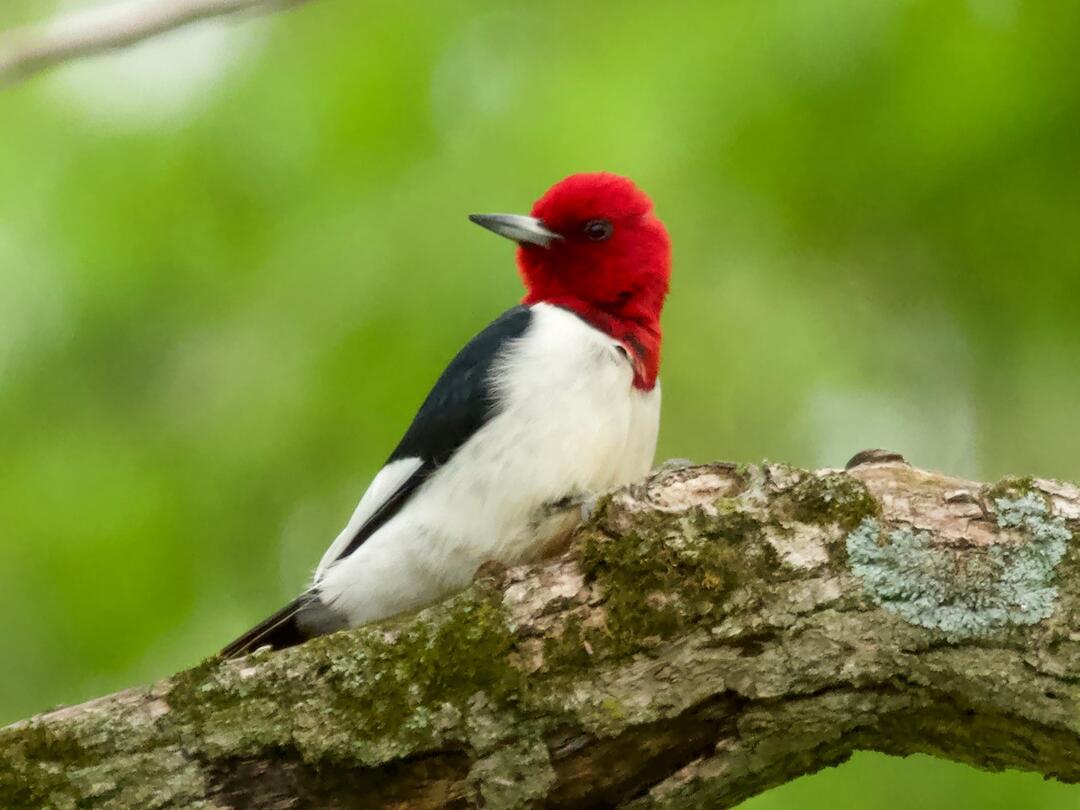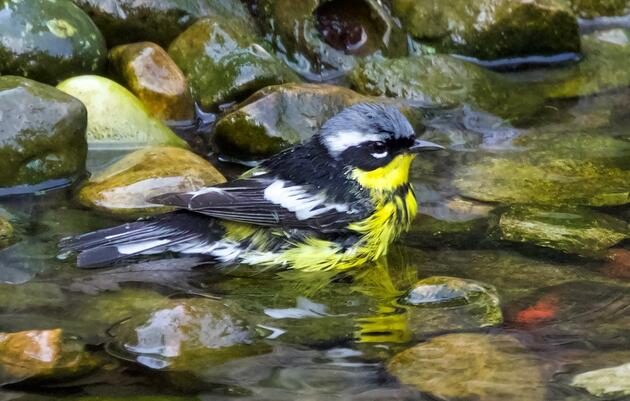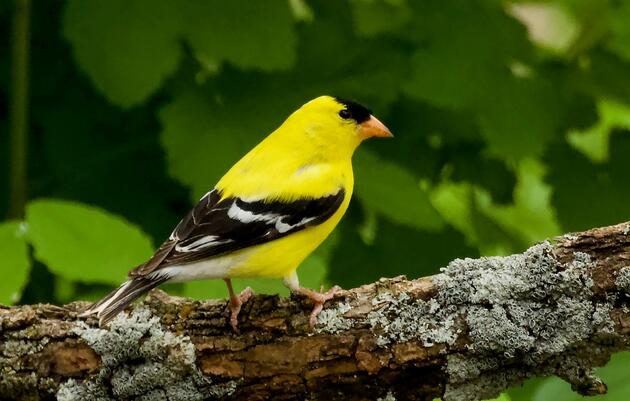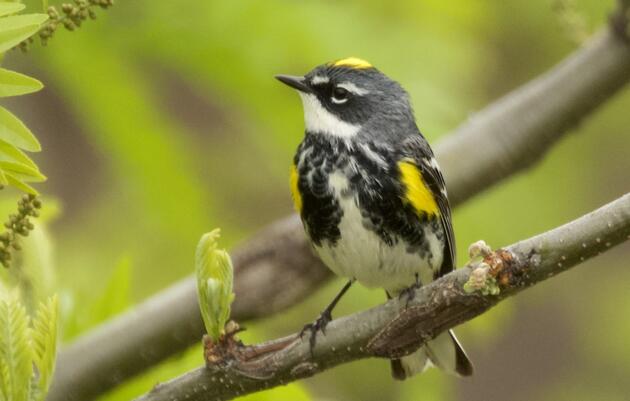By Tom Taylor, Resident Birder, Santa Fe, NM
For over two months this column has taken you on a cyber-tour around the country during the spring songbird migration. This is the ninth column during the COVID-19 pandemic confinement. The reader can link to other articles in the series using the references at the bottom of this page. The tour began in the southwestern part of the US, where the author resides in Santa Fe, NM. For more than ten years each spring he has taken at least one photographic outing to another part of the country to follow the arrival of the neo-tropical migrants from Central and South America.
The previous column made a single stop in eastern Iowa and visited a private backyard that had been specially designed to attract songbirds and allow bird photography. This week the tour will include a couple productive birding locations in Linn County, home of Cedar Rapids, before traveling to extreme northeast Iowa and finishing in nearby Wisconsin. The first stop is Squaw Creek Park on the east edge of town that contains bottomland, hardwood forest, and prairie habitat.
Red-headed Woodpeckers can be seen there, classically posed as in the lead photo. Apart from the obvious head color, the white patches in their wings while flying make for an easy identification. In the last century these birds have fallen in numbers for a variety of reasons – one early cause being the arrival of the European Starling in the 1890s that competed for nest cavities. One can easily understand how it got its name.
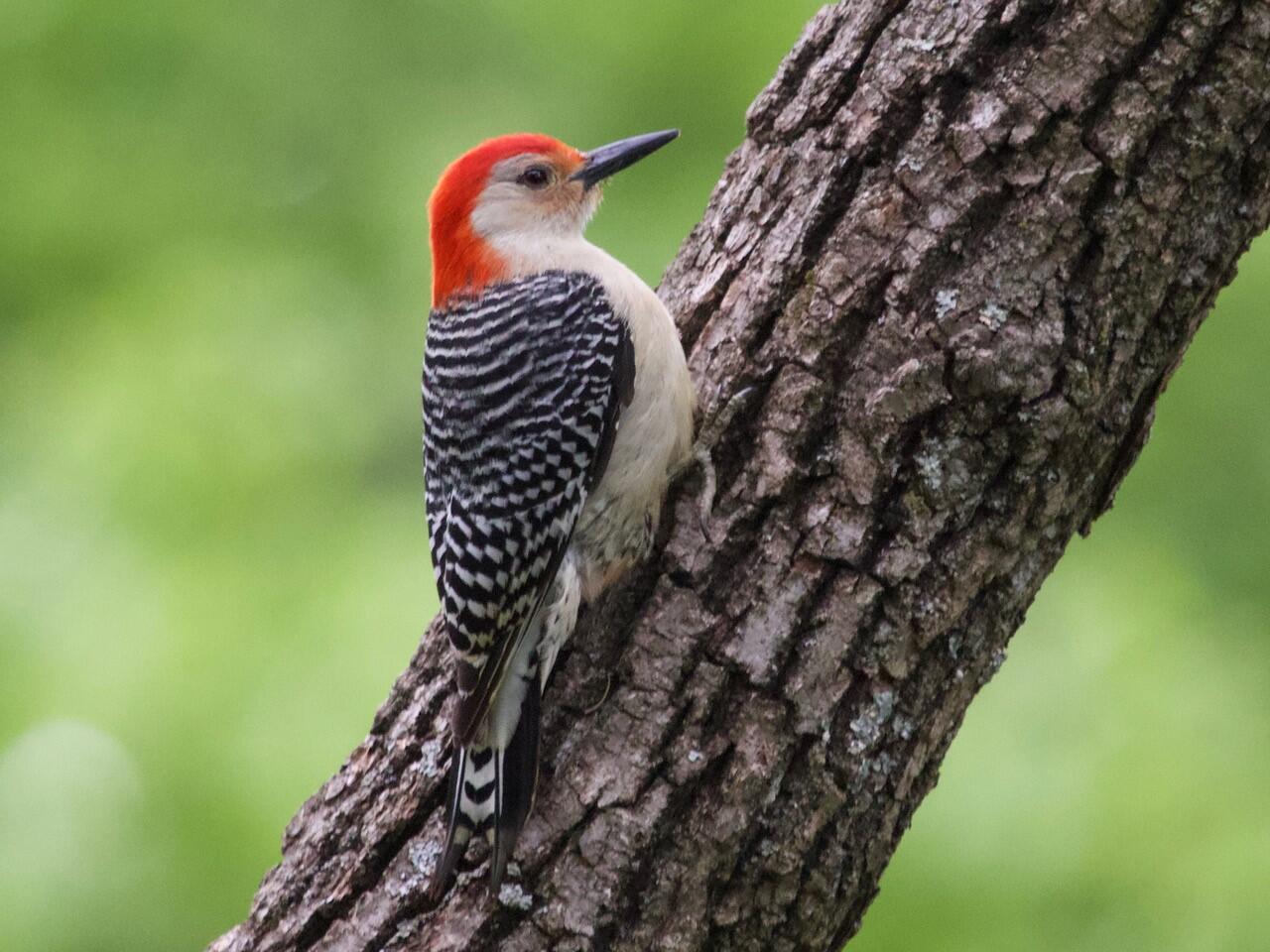
On the other hand, the more common Red-bellied Woodpecker creates some consternation. For sure, it too has a red head, but appears to lack the red belly. Fact is, there is a slight pinkish tint in the ventral region that may barely be visible in the photo. This bird is easily found in the eastern half of the country and draws attention to itself with a quite loud call. (In this format there is a vertical display of icons on the left side of the text that lists the birds in this article. The reader can click on the speaker link found inside an icon to hear the bird’s song). Note how woodpeckers perch by bracing themselves with their tail feathers (retrices).
One trail on the back portion of Squaw Creek Park winds through a drainage between the heavily forested hillsides. Because of the minimal amount of public entry, the valley is a prime spot for a wide variety of birds. One of these, the Scarlet Tanager, distinguishes itself as one of the most colorful migrants from South America. The male’s black wings and tail are set against a brilliantly colorful scarlet-red body – further accentuated in the photo by the rich green forest backdrop. The female tanager, as in most bird species, has a much more muted color combination of a near olive-green body with more brownish wing color. Be aware, if you are birding in the fall, that first-winter males have a somewhat similar color scheme as the female. Like all tanagers, they are fruit eaters and, as was the case for the orioles seen in Texas (Article IV), are always found feasting in the coastal mulberry trees after flying across the gulf.
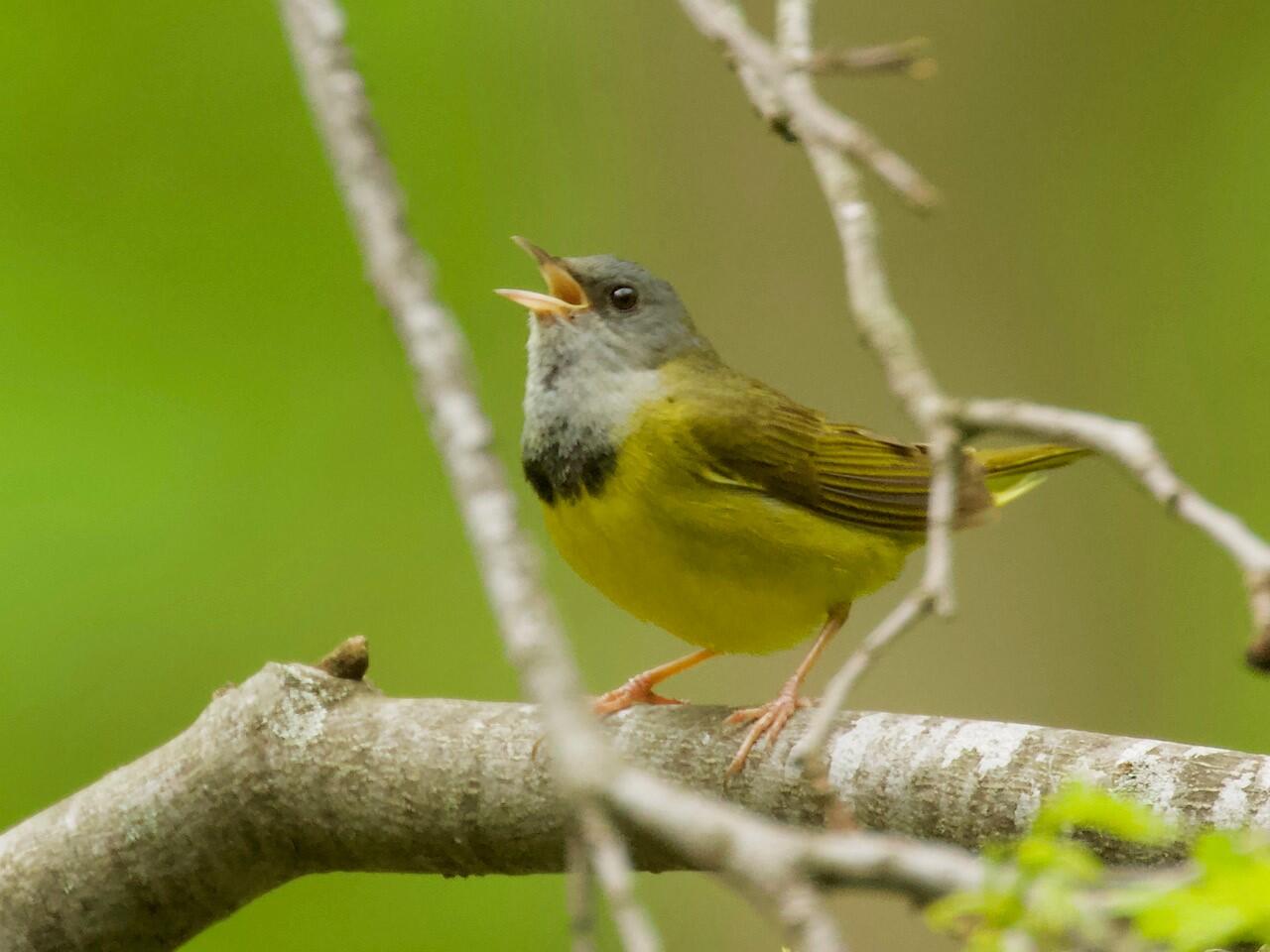
One year ago in this ravine I was able to get my first photograph of one of the most reclusive warblers, the Mourning Warbler. It is a committed skulker that puts the other secretive birds seen on the tour in the “more available” category. This warbler has a sweet call and is distinguished by a dark breast patch on its yellow-green body. It arrives late in migration on its way to Canada after wintering in northwest South America. New Mexicans regularly see its close cousin, the MacGillivray’s Warbler, which is very similar in appearance. The photo of the Mourning Warbler is the result of over two days roaming back and forth along the secluded environment of the ravine. A Mourning Warbler would sometimes call, but then play hide-and-seek and quietly conceal itself in the shrubbery and lower canopy. At the close of the second day I rejoiced at getting this photo – with the bird in the open. I have decided to use the original photo with the over-exposed tree branches around the bird. It serves to remind me of the trouble I went through to acquire it. In fact, at one point I did erase the offending vertical twigs with Photoshop and realized that with such a field-guide perfect shot I had lost an important part of my experience.
There is a second worthwhile public space for birding west of Cedar Rapids, the Pleasant Creek State Recreation Area that is some 15 miles northwest of the city. It gives birders a chance to explore some tracts of restored prairie. Earlier in the tour we saw several grassland birds, two of them being sparrows located in Kansas. My Iowa birding mentor, mentioned in the previous column, took me to one of the Pleasant Creek prairies to observe and learn about one of the more idiosyncratic sparrows in the Midwest, the Henslow’s Sparrow. And I needed to be trained. This sparrow has a preference for weedy grassland expanses and tends to hide most of the time deep in the stalks. One must pay close attention and watch for one to perch atop a grass stem or small shrub. The ultimate key to finding them is to know their high-pitched insect-like chirp, which is distinctive but easy to miss. The reader can fully appreciate the full “chorus” by clicking on the speaker link found inside the bird’s icon to the left of this article. They are, in fact, quite humorous when they set up to sing, as they raise their head high before letting out with this brief musical treat. Lastly, these same grasslands support Field Sparrows. They are easily distinguished from other sparrows by their somewhat orange beak and rusty-colored head pattern. They clearly announce their presence with a distinctive “bouncing ping-pong ball” trill that easily carries across the grassy terrain.
At this point the tour will move to the far northeast corner of Iowa and the west-central region of Wisconsin that includes Necedah National Wildlife Refuge, approximately 60 miles east of Lacrosse, Wisconsin. A typical place to go birding in this part of Iowa is Pikes Peak State Park, which is located adjacent to the small town of McGregor. It rests high on the bluffs above the Mississippi River, giving the exquisite panorama shown in the photo. Zebulon Pike on an 1805 government expedition first noted its strategic value for building a fort. The photo from the Pikes Peak lookout shows the mouth of the Wisconsin River in the distance with a prominent bluff to the south (right in the photo) where Wyalusing (Home of the Warrior) State Park is located in Wisconsin. I want to start on the Iowa side of the river before mentioning two important, but decidedly different, birding events that have taken place on the Wisconsin side.
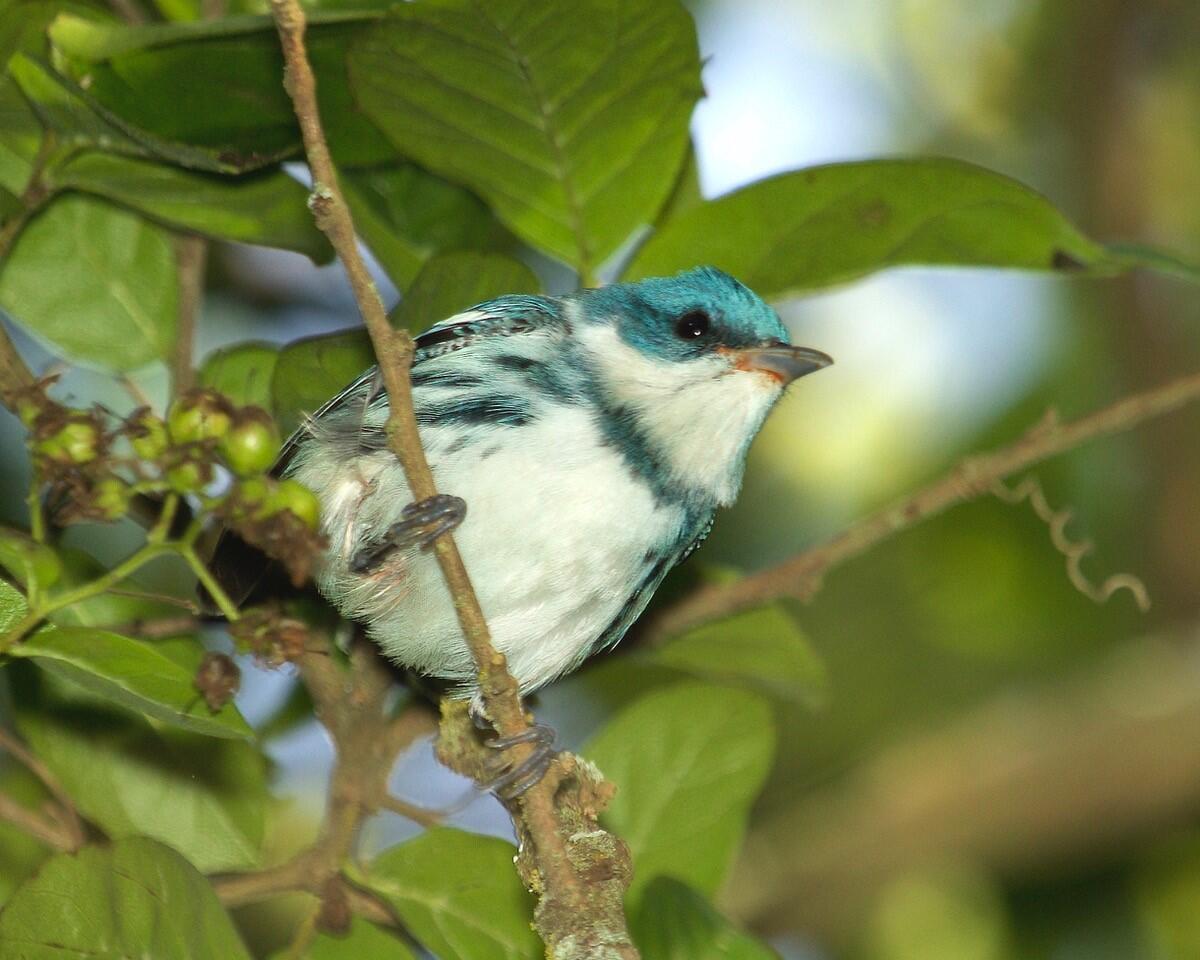
The northeast part of Iowa has recently gained notoriety as a key habitat for the strikingly blue-colored Cerulean Warbler, which is a species of concern. These birds nest there in the dense hardwood forests that cover the remote ravines and bluffs – an important factor being the number of walnut trees. It spends its winter over a large expanse of northwest South America. I have seen them at Pikes Peak, where in the spring the males sing from high in the trees to attract a mate. My only close look (in the photo) came from one of my spring trips to the Texas coast. Obviously, they make a prize photograph.
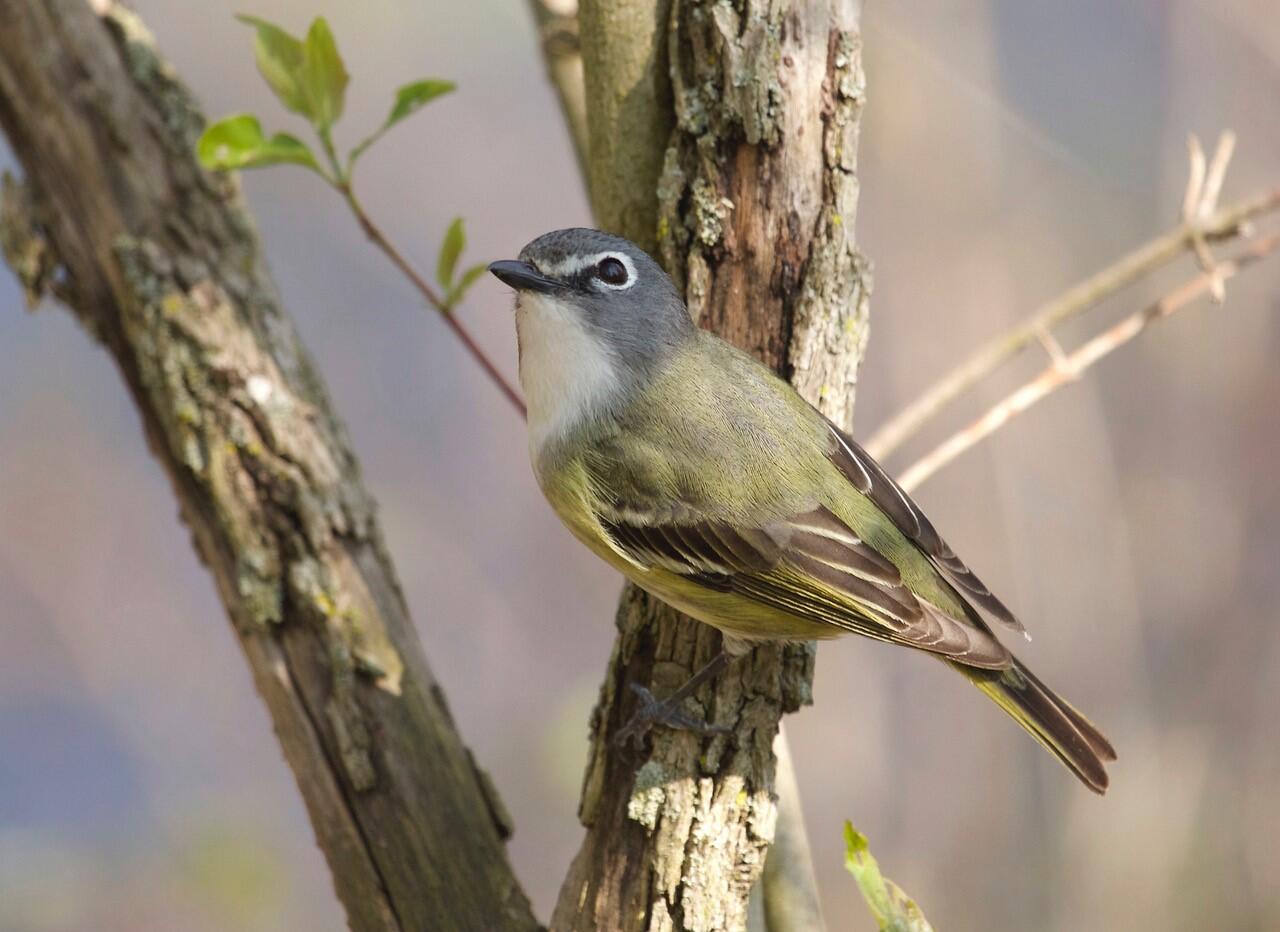
Pikes Peak has a wide variety of migrating songbirds that includes a number of the vireos. As a matter of completeness for the tour, I want to mention another vireo, in addition to the Yellow-throated Vireo of Article VII, that has those distinctive eye spectacles. In this case it is the Blue-headed Vireo that can be seen as it migrates to its nesting grounds north of Iowa, and most certainly appears at Pikes Peak. New Mexicans almost always see the Plumbeous (lead colored) Vireo, which also carries the spectacles.
Obviously, the birding is identical for Wyalusing State Park on the other side of the river. But apart from the birdlife, there is a monument there located high over the river, commemorating the now extinct Passenger Pigeon. Aldo Leopold, an important force in wildlife conservation (author of the Sand County Almanac and native Iowan), dedicated it in 1947 in memory of the last Wisconsin Passenger Pigeon shot in 1899. This area of Wisconsin was once home to one of the largest nesting assemblies of the pigeon and site of one of the most massive slaughters of the birds in the 1870s. The brutality afforded these birds is recounted in Joel Greenberg’s book, entitled A Feathered River Across the Sky: The Passenger Pigeon’s Flight to Extinction. The nearby town of Sparta was one source for the ammunition used by the multiple thousands of professional hunters that descended on the area – with one gun dealer selling 512,000 rounds of ammunition. (As an aside, Aldo Leopold played a prominent role in New Mexico conservation. He worked for the forest service for almost twenty years in the Southwest and, at his urging, the Gila Wilderness was created in the southwest New Mexico, the first such national designation).
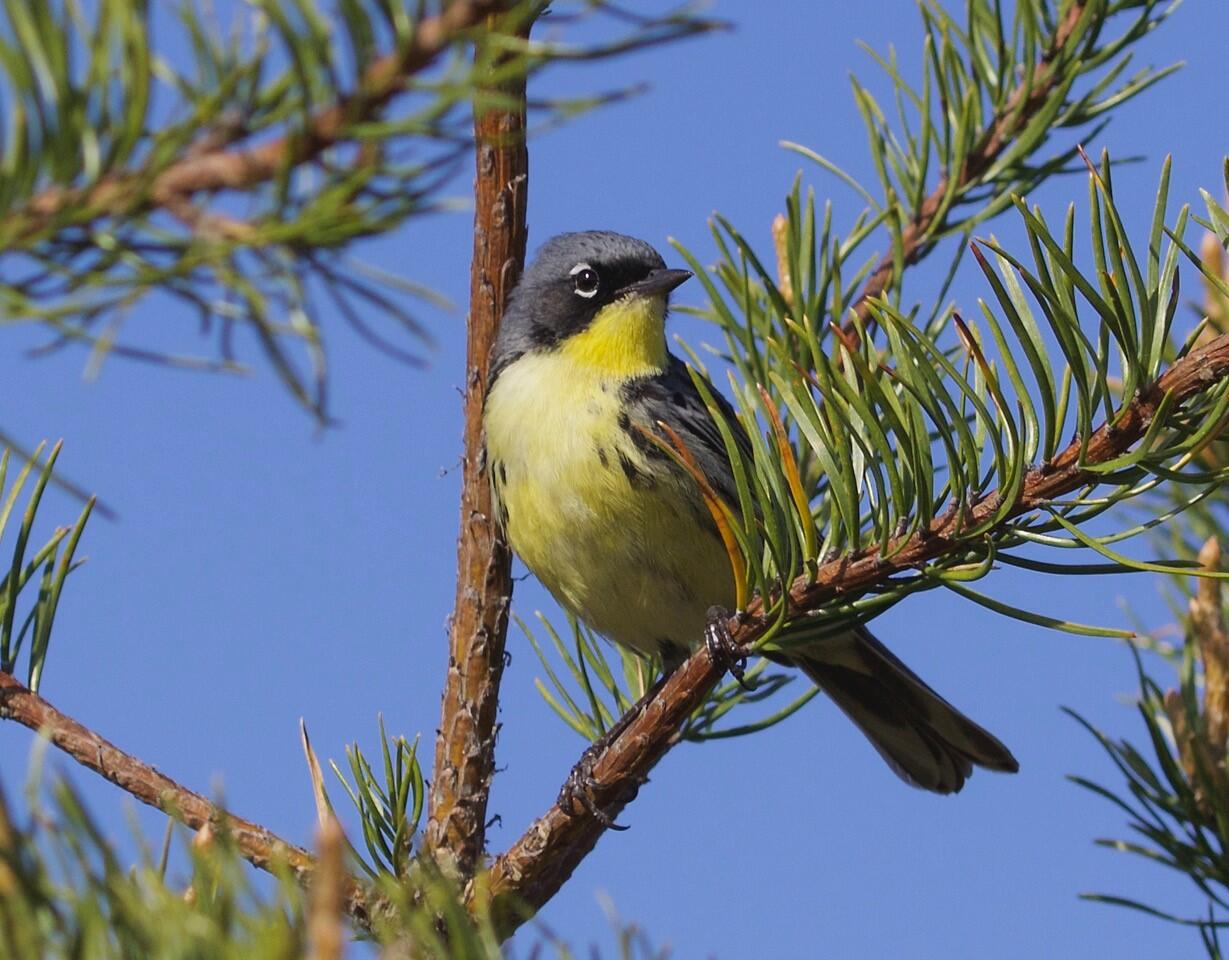
Importantly and in contrast, there has been a dedicated effort in Wisconsin that has put in place a recovery plan for the Kirtland’s Warbler, which has been classified as an endangered species. The bird was first found nesting in Wisconsin in 2009, probably as a spillover of the successful recovery program enacted in the lower part of Michigan since the late 1980s, when the continental number of singing males had dropped below a couple hundred. A combination of cowbird parasitism plus loss of available young jack pine trees for nesting led to their precipitous decline. Overall, the birds now number in the thousands and have recently been delisted. There are several sites in Wisconsin where Kirtland’s Warblers are carefully monitored. This all came into focus in 2014 when I signed up for a weekend tour with the Natural Resources Foundation of Wisconsin. This time frame was key in the context of the Passenger Pigeon, as in 1914 the last pigeon died in the Cincinnati Zoo and there was a centennial year in progress. The group offered an evening lecture on the pigeon by Dr. Stanley Temple, Prof. Emeritus in Conservation, UW-Madison and Project Passenger volunteer. The following morning we visited one of the locations near the Necedah refuge where the Kirtland’s Warblers were nesting. The guided trip was delightful, and the birds were seen that May morning.
The cyber-tour will finish with the next article as it takes a loop north to Minnesota, across North Dakota, before finishing in New Mexico in time for the Rufous and Calliope Hummingbirds to arrive from the Northwest.

